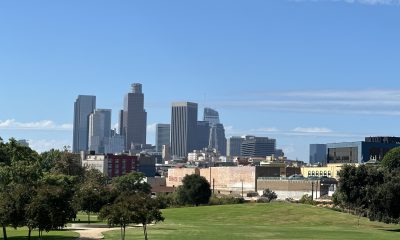West Hollywood
West Hollywood in brief- City government in action this week
Participant Application Deadline is April 15 for WeHo Pride Street Fair Exhibitors, Parade Entries, and Food Vendors
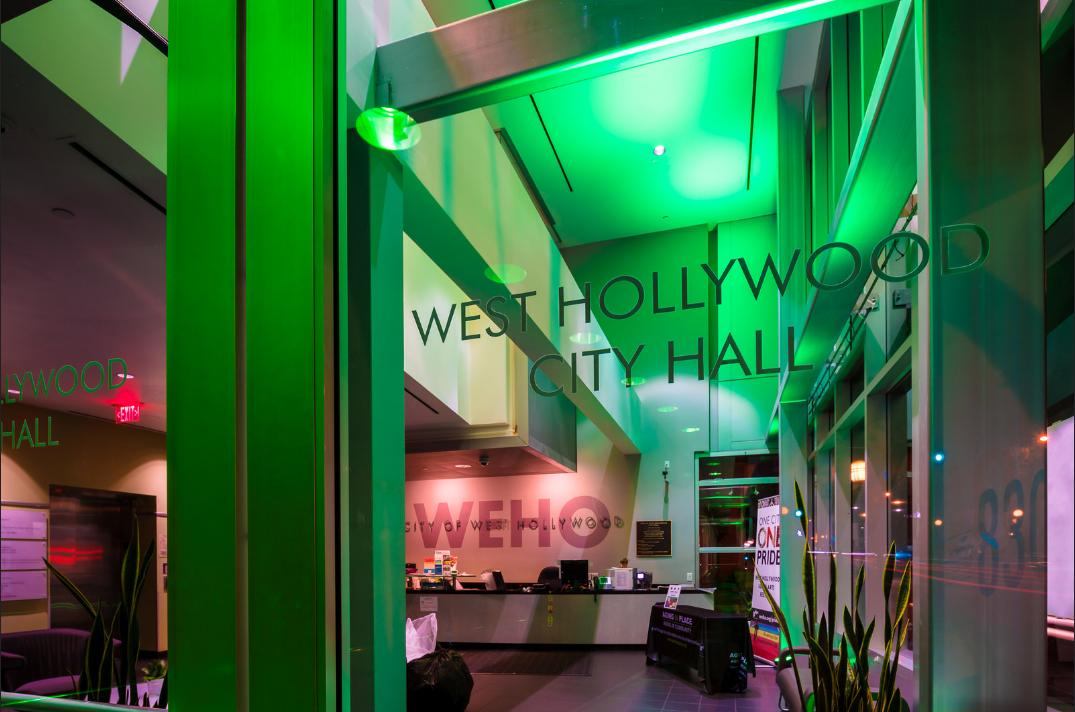
City of West Hollywood to Host Symposium: ‘Water Wise | Water Works’
WEST HOLLYWOOD – During Earth Month in April, the City of West Hollywood is working to focus attention on environmental efforts and initiatives and educational opportunities for the community. The City aims to elevate awareness about its programs and policies related to West Hollywood’s natural and built environments, ecology, and sustainability.
As part of this effort, the City of West Hollywood will host a free in-person symposium: Water Wise | Water Works. The event will focus on water as a natural resource, concentrating on its indispensable role in supporting urbanized environments. It will look ahead at issues, opportunities, and challenges in West Hollywood and the Greater Los Angeles region in the future.
The Water Wise | Water Works symposium will take place on Saturday, April 20, 2024 from 9:30 a.m. to 1:30 p.m. at the City of West Hollywood’s Council Chambers/Public Meeting Room, located at 625 N. San Vicente Boulevard. The event is free and open to the public, RSVP is requested via Eventbrite. Limited validated parking is available in the adjacent five-story parking structure.
All life begins and ends with water. A precious resource, water is vital for a healthy and vibrant planet. Clean fresh water is not only essential for drinking and sanitation and providing for our crops, livestock, and industry, it is also the basis for creating and sustaining the ecosystems on which all humanity depends. Spending time in proximity to nature and water has been shown to have a direct effect on emotional well-being, reducing stress, anxiety, and heart rates as well as extending human life spans.
The Water Wise | Water Works symposium will explore the fundamental role that water plays in supporting urbanized settings and will look at some of the key challenges and opportunities that lie ahead concerning future sustainability, construction mitigation, climate change, ecological systems, and resilience goals.
Presentations scheduled for the symposium include an overview of current City programs and talks on the following topics:
- Water Policy Happenings at the Regional & Local Scale with Kim Clark, Planning Supervisor, Resource Conservation & Resilient
Communities, Southern California Association of Governments;
- Resource Management and Underground Water: Technical Challenges and Opportunities Ahead with Laney Nelson, Water Engineer, ARUP, experts dedicated to sustainable development;
- History of Water and Ecological Resilience in a Rapidly Changing Context with Dr. Edith Guzman, UCLA Luskin Center for Innovation;
- Power of Water-Centric Design with Water with Mariam Mojdehi, Architect, Founding Partner, MAAM Architecture & Design Studio; and
- Water Wise Landscapes/Regenerating Nature with Hadley Arnold, Executive Director, Arid Lands Institute/Woodbury University.
Following the presentations, there will be a moderated panel discussion and a period for questions and answers.
The City of West Hollywood is dedicated to sustainability and preserving the environment, including its:
- Participation in the National Wildlife Federation’s Mayors’ Monarch Pledge to mark the City’s commitment to saving the monarch butterfly and other pollinators through public awareness and expansion of pollinator gardens throughout West Hollywood;
- Designation by the U.S. Environmental Protection Agency (EPA) as a Green Power Community by meeting 65% of its 100% renewable energy use through voluntary green power that goes above-and-beyond the State of California’s standards. The EPA’s Green Power Partnership is a voluntary program that helps increase Green Power use among U.S. organizations to advance the American market for renewable energy and development of those sources as a way to reduce air pollution and other environmental impacts associated with electricity use. Learn more about how the West Hollywood community gets its Green Power;
- Green Building Program, the first-in-the-state green building code, that builds upon state requirements and integrates locally specific requirements for new buildings and remodels to strive towards energy efficiency, improve the health of the environment and community, and help the City shape a sustainable future. The Green Building Program was updated in 2023 to include more aggressive standards for electric vehicle charging stations; and
- Implementation of an organics collection program in compliance with SB 1383, a statewide effort to reduce emissions of short-lived climate pollutants by reducing organic waste disposal.
The City of West Hollywood continues its work to implement its people-centered Climate Action and Adaptation Plan, WeHo Climate Action, which outlines the City’s intended path to achieve carbon neutrality by 2035 and adapt to the impacts of a changing climate while centering equity and quality-of-life outcomes for the community. The City launched a public dashboard that monitors progress under the Plan toward achieving carbon neutrality. To learn more about the City’s ongoing sustainability programs and initiatives as well as information and resources, visit WeHo Climate Action & Sustainability.
For more information about the symposium, please contact Michael Barker, Project Architect in the City of West Hollywood’s Urban Design and Architecture Studio Division, as (323) 848-6483 or at [email protected].
For people who are Deaf or hard of hearing, please call TTY (323) 848-6496.
West Hollywood Celebrates Lesbian and Queer Women Visibility Week
The City of West Hollywood recognizes April 22, 2024 through April 28, 2024 as Lesbian and Queer Women Visibility Week. The City will display the Lesbian Pride flag in medians along Santa Monica Boulevard and West Hollywood City Hall and the lanterns over Santa Monica Boulevard will be lit in pink, orange, white, and red to reflect the shades of the Lesbian Pride flag.
Events during the week will feature a variety of gatherings produced with the assistance of the L-Project and Fan Girl Cafe including:
- NextGen Coffee and Convo, featuring a panel on queer activism, challenges faced by LGBTQ women in business, and advocating for non-binary and gender-nonconforming identities with panelists Marquita Thomas, Chanel Lumiere, and Melanie Vesey. This free event will be held at Fan Girl Cafe, located at 8157 Santa Monica Boulevard, on Wednesday, April 24, 2024 from 7 p.m. to 10 p.m., and will also feature an opportunity for community members to network and meet one another.
- Lesbian Speakers Series Film screening of the award-winning documentary Ahead of the Curve and Q&A with Franco Stevens and filmmakers Jen Rainin (Franco’s wife) and Rivkah Beth Medow. Ahead of the Curve captures the story of Franco Stevens, founder of the most successful lesbian magazine in the world and her fight to keep Curve magazine alive. This free event takes place on Saturday, April 27, 2024 at 5:30 p.m. at the City’s Council Chambers/Public Meeting Room located at 625 N. San Vicente Boulevard. This event will begin with a reception with light snacks and refreshments at 5:30 p.m. The screening will begin at 6 p.m. The Q&A will follow the film.
- The City invites community members to spend an afternoon at West Hollywood Park, located at 647 N. San Vicente Boulevard, for a Queer Art in the Park gathering on Sunday, April 28, 2024 from 12 p.m. to 4 p.m. The event will feature lawn games, music, and queer arts and crafts vendors. Entry is free. Feel free to bring a blanket, yoga mat, lawn chair, sunscreen, and picnic accoutrements and meet new and old friends in the park. For additional information, please visit www.weho.org/lgbtq.
Since incorporation in 1984, the City of West Hollywood has become one of the most influential cities in the nation for its outspoken advocacy on LGBTQ issues. No other city of its size has had a greater impact on the national public policy discourse on fairness and inclusiveness for LGBTQ people. More than 40 percent of residents in West Hollywood identify as LGBTQ and three of the five members of the West Hollywood City Council are openly LGBTQ. The City has advocated for more than three decades for measures to support LGBTQ individuals and has been in the vanguard on efforts to gain and protect equality for all people on a state, national, and international level.
For more information about the City of West Hollywood’s Lesbian and Queer Women Visibility Week, please visit www.weho.org/lgbtq or contact Moya Márquez, the City of West Hollywood’s Community Programs Coordinator, at [email protected] or at (323) 848-6574.
For people who are Deaf or hard of hearing, please call TTY (323) 848-6496.
WeHo Pride 2024 Participant Application Deadline is April 15 for WeHo Pride Street Fair Exhibitors, Parade Entries, and Food Vendors
The City of West Hollywood will close the Parade Participant, Street Fair Exhibitor, and Food Vendor application portals for its WeHo Pride 2024 celebrations on April 15, 2024 at 11:59 p.m. Pacific Time. Application portals can be accessed via the ‘Get Involved’ page on the WeHo Pride website: www.wehopride.com.
WeHo Pride Weekend will take place on Friday, May 31, 2024; Saturday, June 1, 2024; and Sunday, June 2, 2024 in and around West Hollywood Park, located at 647 N. San Vicente Boulevard. The weekend will include a free Street Fair, the Women’s Freedom Festival, the Dyke March, the WeHo Pride Parade, and the ticketed OUTLOUD Music Festival @ WeHo Pride, as well as WeHo Pride Presents Friday Night at OUTLOUD.
The WeHo Pride Street Fair will take place on Saturday, June 1, 2024 and Sunday, June 2, 2024. It will celebrate Pride with the diverse participation of LGBTQ community groups and allied organizations as part of visibility and expression. The Street Fair is free and will feature a vibrant variety of exhibitors along Santa Monica Boulevard. There will be live entertainment and performances on two stages along the boulevard, highlighting the LGBTQ community. The Street Fair is open to everyone. It is a great occasion to take part in WeHo Pride’s LGBTQ community experience. WeHo Pride Street Fair applications are also currently open for vendors, artists, performers, and more. The Street Fair promises to be bigger and better than ever before. With a wide range of activities and options, there is sure to be something for everyone. Organizations interested in applying to participate as an Exhibitor at the WeHo Pride Street Fair can apply here. Food vendors interested in participating in the event can fill out the Google form here.
Get festive as we roll down Santa Monica Boulevard for the WeHo Pride Parade on Sunday, June 2, 2024! The WeHo Pride Parade is an imaginative and colorful annual tradition along Santa Monica Boulevard that embraces LGBTQ representation, inclusion, and progress. Full of music, dancing, colorful floats, festive marching contingents, and creative flair, the Parade celebrates LGBTQ people and our contributions to community and culture. The Parade is a lively, energetic experience with good cheer and great vibes, and a whole lot of rainbows! Whether you participate in the Parade or join in the fun as a spectator, there’s something for everyone at the WeHo Pride Parade! Organizations and individuals interested in submitting an application to participate as an entrant in the annual WeHo Pride Parade can apply here. Get creative and think outside of the box! The WeHo Pride Parade welcomes floats, bands, drill teams, dance teams, entertainment entries, marchers, and more.
There are a variety of ways for brands to sponsor this brand-new era of Pride in West Hollywood as well. From traditional activation spaces (street fair visibility and parade entries) to inclusion at one of the most diverse music events nationally, as well as creative customized opportunities, there are multiple outlets for brand visibility! Organizations interested in becoming a WeHo Pride sponsor can reach out to [email protected]
Additional details about WeHo Pride 2024 will be posted as they become available at www.wehopride.com. Follow @wehopride on Instagram and Facebook and follow @officiallyoutloud on Instagram and Facebook.
About WeHo Pride and the City of West Hollywood – Since its incorporation in 1984, the City of West Hollywood has become one of the most influential cities in the nation for its outspoken advocacy on LGBTQ issues. Home to the “Rainbow District” along Santa Monica Boulevard, which features a concentration of historic LGBTQ clubs, restaurants, and retail shops, West Hollywood consistently tops lists of “most LGBTQ friendly cities” in the nation. More than 40 percent of residents in West Hollywood identify as LGBTQ and four of the five members of the West Hollywood City Council are openly LGBTQ.
Pride is deeply rooted part of West Hollywood’s history and culture. In fact, Pride events have taken place in West Hollywood for more than 40 years (since 1979, five years before the City of West Hollywood was incorporated as a municipality). The City’s embrace of Pride is part of its advocacy for nearly four decades for measures that support LGBTQ individuals, and the City is in the vanguard on efforts to gain and protect equality for all people on a state, national, and international level. The City of West Hollywood is one of the first municipalities to form a Lesbian & Gay Advisory Board (now LGBTQ+ Commission) and a Transgender Advisory Board, which each address matters of advocacy. As part of its support of the transgender community, the City has a Transgender Resource Guide available on the City’s website.
In 2022, the City of West Hollywood inaugurated WeHo Pride with programming that represents a diverse array of LGBTQ community groups as part of visibility, expression, and celebration. West Hollywood is a community of choice for LGBTQ people from throughout the world and WeHo Pride embraces a source of deep connection for its LGBTQ history and culture.
For more information about WeHo Pride and the WeHo Pride Arts Festival, please visit www.wehopride.com.
For more information about Outloud @ WeHo Pride, please visit www.weareoutloud.com.
For inquires to the City of West Hollywood’s Event Services Division, please email [email protected].
For people who are Deaf or hard of hearing, please call TTY (323) 848-6496.

‘Spring Fest’ at West Hollywood Park
The City of West Hollywood’s Recreation Services Division invites the community to splash into Spring Fest in the park and at the pool on Saturday, April 27, 2024 from 11 a.m. to 2 p.m. at West Hollywood Park, located at 647 N. San Vicente Boulevard. Bring your family and friends for a fun day of outdoor activities. Limited parking is available in the adjacent five-story West Hollywood Park structure.
Activities will begin at the West Hollywood Park Aquatic and Recreation Center and Great Lawn. There will be carnival games, music, performances, giveaways, egg hunts, face painters, and much more! You won’t want to miss this!
Three of the featured activities for the event are:
- Youth Basketball Shoot Out (Ages 10 to 15) – register here ($7) – In the Shoot Out, the player shoots from five spots around the key: right corner, right wing, top of key, left wing, and left corner. At each spot: take one dribble in for a mid-range shot, dribble for a lay-up, and then end the game with a 1 & 1 free throw.
- Duck Relays and Cardboard Boat Races – register here (free) – Duck Relays are a swim event using inflatable ducks to race relay-style across the pool in a team of four and Cardboard Boat Race are one- to three-person teams of all ages that will test their ingenuity in racing homemade boats made of cardboard and duct tape across the pool.
- Themed Recreation Swim and Rubber Duckie Hunt – registration has reached capacity, waiting list is open here (free) – Themed Recreation Swim is full of adorable rafts of rubber ducks, water toys, floaties, and mighty merfolk of the sea and swimmers will be able to participate in a rubber duckie hunt.
Learn more about Spring Fest and recreation programming by visiting www.weho.org/recreation and selecting Rec Reader.
For more information, please call the City of West Hollywood’s Recreation Services Division at (323) 848-6534 or email [email protected] or [email protected].
For people who are Deaf or hard of hearing, please call TTY (323) 848-6496.
Open Call for Arts Grant Program Applications
The City of West Hollywood has opened application opportunities for its 2025 Arts Grant Program. The City will host a virtual Arts Grant Program information workshop for those who are interested in applying to learn more about the City’s grant-eligibility requirements and application process, as well as to ask questions.
The Arts Grant Program information workshop will be held online via the Zoom platform on Wednesday, May 22, 2024 at 1 p.m. First-time grant applicants and returning organizations with new development personnel are strongly encouraged to attend the workshop to become familiar with the application process. For more information, please visit www.weho.org/arts.
The City of West Hollywood, through its Arts and Cultural Affairs Commission, has managed the Arts Grant Program for 26 years. West Hollywood’s Arts Grant Program provides grant funding to individual artists, artist collectives, and nonprofit arts organizations for the production, performance, or presentation of art projects that take place in the City of West Hollywood as well as those that serve the West Hollywood community.
The City of West Hollywood invites and encourages artists and organizations representing diverse populations and diverse artistic disciplines to apply for these grants. As defined in the Cultural Equity Statement, diversity includes all ways in which people differ, including but not limited to, race, ethnicity, gender, socioeconomic status, education, age, gender identity, gender expression, sexual orientation, ability, geography, citizenship status, religion, language, physical appearance, and the intersection of these various identities. The City commits to ensuring cultural equity in all arts policies and practices.
The Arts Grant Program categories with open application processes for 2025 are as follows:
Arts Project Grant — Supports the production, performance, or presentation of art projects that take place in the City of West Hollywood and that serve the West Hollywood community. The proposed projects should take place in the City of West Hollywood in 2025 and 2026. Proposed presentations may include, but are not limited to: comedy show, dance performance, drag performance, film screening, visual art exhibit, music presentation, poetry reading, and theatre presentation. The Arts Project Grant category is awarded in a two-year cycle [with one application, grantee can be awarded for 2 years]. The maximum grant award is $20,000 per grantee ($10,000 per year). The deadline for this category is Monday, July 1, 2024.
Community Arts Grant — Supports non-profit arts organizations with a history of supporting BIPOC, LGBQ, and/or female artists and audiences. Proposed projects should take place in West Hollywood in 2025. Proposed presentations can include an art centered presentation or performance, and/or an educational and participatory program (workshop) which engages BIPOC, LGBQ, and/or female artists and audiences. The maximum grant award for both artists and non-profits arts organizations for this category is $6,000. The deadline for this category is Monday, July 1, 2024.
Transgender, Gender Diverse, Intersex, + (TGI+) Arts Grant — Supports and enhances the presentation of artworks in West Hollywood by transgender, non-binary, intersex, and gender nonconforming artists and non-profit organizations with a history of supporting artists in these communities. Proposed projects should take place in West Hollywood in 2025. Proposed presentations should include art presentations which engage transgender, gender diverse, and/or intersex artists and audiences. The maximum grant award is $6,500 for both artists and non-profit arts organizations. The deadline for this category is Monday, July 1, 2024.
WeHo Artist Grant — Supports the long-term development of an artist’s ideas by providing funds that increase the capacity for artists to realize work, advance the conditions of creation, and navigate the complexities of both making art and making a career. Eligible artists must reside in the City of West Hollywood. The grant award is $6,000 per year for five artists. The deadline for applications is Monday, July 1, 2024.
Artists and organizations interested in applying may visit www.weho.org/arts for more information.
For more information about the City of West Hollywood’s Arts Grant Program, please visit www.weho.org/arts or contact City of West Hollywood Grants Coordinator Eva Angeloff at (323) 848-6354 or [email protected].
For people who are Deaf or hard of hearing, please call TTY (323) 848-6496.
West Hollywood Promotes Local Actions that Address Climate Change as it Celebrates Earth Month in April with ‘WeHo Takes Climate Action 2024’
In honor of Earth Month in April, the City of West Hollywood will celebrate WeHo Takes Climate Action 2024 to rally community members to collectively embrace sustainable practices and contribute to the City’s 2035 carbon neutrality goal. Community members are encouraged to share social media posts about taking sustainability action steps using the hashtag #WeHoClimateAction.
Starting in April, residents, businesses, and local organizations are encouraged to take various actions that support the City’s ambitious environmental goals. Through its @wehocity social media pages, the City will promote various steps relating to energy, transportation, zero waste, natural environment, and resilience that community members can take. The City will also share the latest information on its climate action initiatives to raise community awareness about City programs and policies related to its natural and built environments, ecology, and sustainability efforts.
The City of West Hollywood has a strong record of developing and instituting progressive and forward-thinking environmental policies and, as a city committed to reducing its carbon footprint, West Hollywood recognizes the importance of individual actions in making a substantial impact on the health of the planet.
“One of the City of West Hollywood’s most critical core values is Responsibility for the Environment,” said City of West Hollywood Mayor John M. Erickson. “West Hollywood has steadily led the way in developing and applying policies that help reduce greenhouse gas emissions, save energy, and promote sustainability. As we take next steps in realizing the goals of our Climate Action Plan, Earth Month in April is a wonderful opportunity for all us of to do what we can to make individual steps that add up to big community impacts and help our city to reducing our carbon footprint, which will better prepare us for the future effects of climate change.”
In the spirit of proactive initiatives, the City of West Hollywood is gearing up for Earth Month with a variety of community events and programs in April:
- On Saturday, April 20, 2024, the City will host a free in-person symposium, Water Wise | Water Works, which will explore the fundamental role that water plays in supporting urbanized settings. It will examine some of the key challenges and opportunities that lie ahead with respect to future sustainability, climate change, ecology, and resilience goals that are pursued at the local and state levels. The symposium will take place at the West Hollywood City Council Chambers/Public Meeting Room, located at 625 N. San Vicente Boulevard from 9 a.m. to 1 p.m. More information is available on the City website calendar.
- On Saturday, April 20, 2024 the City will host an annual Tree Planting at 9 a.m. in the public parkway at 1146/1148 Formosa Avenue. Four paperbark (Melaleuca quinquenervia) trees, which are widely planted throughout Southern California and are native to Australia, will be planted. The paperbark is a rounded, evergreen tree with a maximum height of 40 feet. It has a low water use rating and features exfoliating bark and oblong leaves with seasonal flower displays in the summer and fall that will attract pollinators and birds. Sun exposure ranges from partial shade to full sun. West Hollywood community members are invited and encouraged to participate in this year’s annual tree planting event. Drop in; no RSVP is needed. Supervision, instruction, tools, and gloves will be provided. The event will start with a short ‘how-to’ planting session, followed by a discussion on the benefits trees provide to the urban environment.
To showcase the City of West Hollywood climate actions in energy, transportation, zero waste, natural environment, and resilience programs, the City will highlight its sustainability programs and share information about how community members can get involved via social media and more, including the following:
- The City’s newly launched Green Business Certification program is a recognizes and encourages efficient, profitable, and sustainable business operations. To support businesses, West Hollywood’s Green Business Program and its services are being offered at no cost. Visit go.weho.org/greenbusiness for more information.
- Electrify WeHo is the City’s new web resource on electrification with resources to help community members transition into an all-electric home which can improve indoor air quality, lower your energy costs, modernize your home, and help WeHo reach its 2035 carbon neutrality goal. Learn about the benefits and incentives to help make the switch at Electrify WeHo.
- Go Solar West Hollywood is a City-sponsored program encouraging property owners to go solar. The City has partnered with online marketplace EnergySage to help property owners receive and compare quotes.
- The City’s new Resilience Efforts webpage provides the public with information on resilience and centralizes the City’s resiliency efforts to serve as a resource for community members.
- The City of West Hollywood encourages community members to leave their automobiles at home and take alternate forms of transportation when possible while traversing the City, including by using scooters, bicycles, walking (the City is only 1.9 square miles!), or via the City’s free transit options. Please visit www.wehopickup.com or www.weho.org/cityline for more information.
- Responding to a statewide effort to reduce emissions associated with organic waste disposal by diverting waste from landfills, the City has worked with Athens Services to establish an organic recycling service throughout West Hollywood. Community members are encouraged to visit the City’s organic recycling webpage to learn how to sort waste and recycle.
- In January 2024, the West Hollywood City Council adopted the new Tree Canopy ordinance regulating the preservation, removal, relocation, and replacement of existing mature canopy trees.
- The City’s Heritage Tree program promotes identifying specimen trees, promotes tree awareness, advocates for the protection of mature tree benefits, and educates community members about the City’s heritage trees and proper maintenance practices. All great trees start small! Visit the City’s webpage about young tree care best practices. The WeHo community is encouraged to check out resource videos and take the tree steward pledge!
Finally, the City will continue to implement its people-centered Climate Action and Adaptation Plan (WeHo Climate Action), which outlines the City’s intended path to achieve carbon neutrality by 2035 and adapt to the impacts of a changing climate while centering equity and quality-of-life outcomes for the West Hollywood community. The City s biannually updates its WeHo Climate Action public dashboard that monitors progress toward achieving carbon neutrality and its 60 programs and projects. To learn more about the City’s active sustainability initiatives and public dashboard, visit WeHo Climate Action & Sustainability.
The City of West Hollywood will, additionally partner with The Center for Early Education to provide a day of service for school children. This private event will take place at Kings Road Park and programming will feature monarch butterfly conservation education and activities, planting nectar and other foliage, and park cleanup. Visit the City’s educational Monarch Butterfly Conservation webpage to learn more about monarch butterfly conservation and City efforts.
For more information about West Hollywood’s Earth Month 2024, please contact Andi Lovano, City of West Hollywood Community & Legislative Affairs Manager, at (323) 848-6333 or at [email protected].
For people who are Deaf or hard of hearing, please call TTY (323) 848-6496.
******************************************************************************************
For up-to-date information about City of West Hollywood news and events, follow @wehocity on social media, sign-up for news updates at www.weho.org/email, and visit the City’s calendar of meetings and events at www.weho.org/calendar. West Hollywood City Hall is open for walk-in services at public counters or by appointment by visiting www.weho.org/appointments. City Hall services are accessible by phone at (323) 848-6400 and via website at www.weho.org. Receive text updates by texting “WeHo” to (323) 848-5000.
West Hollywood
Administration refused to honor World AIDS Day; residents gathered with defiance, grief and love
Yesterday, members of the APLA Health Writers Group read moving stories to a large group of locals gathered at the AIDS monument.
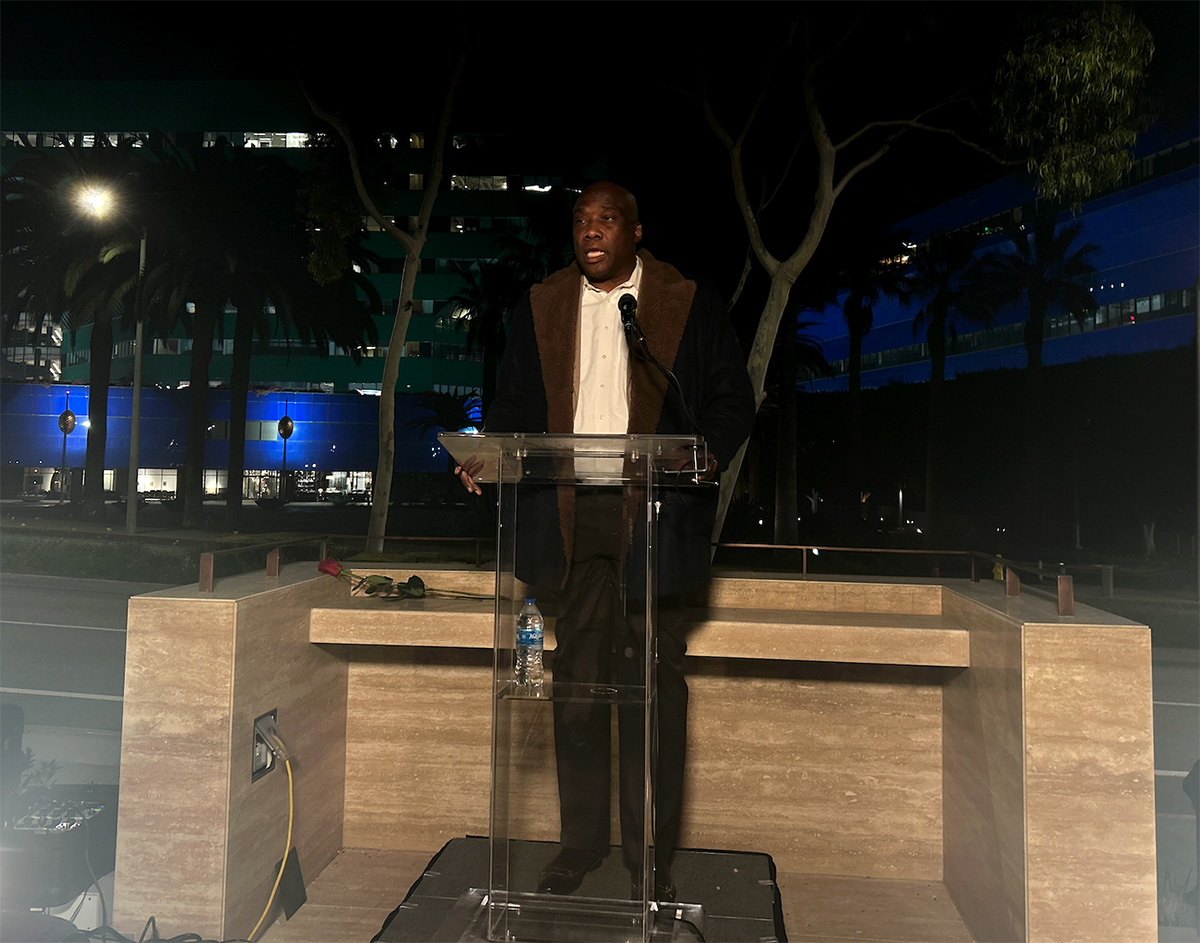
On Monday, the federal administration did not honor World AIDS Day, for the first time since the international awareness day was created in 1988. In addition to significant funding cuts to organizations focusing on HIV preventative treatment and care, the government’s halting of this commemoration perpetuates a dismissive system of inaction against LGBTQ+ people.
And yet, over 50 community members filled the empty spaces of West Hollywood’s AIDS monument yesterday evening, waiting in the night chill as city officials delivered impassioned statements and writers from APLA Health read personal pieces that centered a grief and love for those lost to the epidemic.
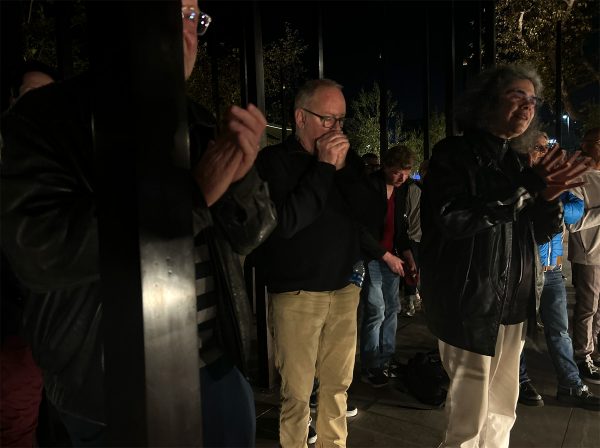
Before the readings began last night, West Hollywood vice mayor John Heilman asked for residents to join him in a righteous rage against administrative apathy. “I want to ask us all to reflect for just a moment about all of the people we lost…I want us to reflect and get angry,” said Heilman. “We have a fucking president who won’t even recognize World AIDS Day.”

Irwin Rappaport, board chair for STORIES: the AIDS monument, echoed this immense disappointment. “Many of us here tonight lived through the 1980s, so we know what that’s like,” Rappaport said. “We also know that because of that neglect, because of that lack of caring from the federal government, we have to care for one another — and we know how to do that. When we don’t have recognition from others, we know how important it is to preserve our own history, to tell our own stories.”
Through heavy silence, five writers from APLA Health’s writers group stood tall before a podium and shared intimate writings they created about the epidemic and its personal impact on them. The collective was established in 1989 to provide an inclusive, expressive space for HIV-positive writers and allies to work on their writing and learn how to share their stories.
Writer Brian Sonia Wallace, who served as West Hollywood’s poet laureate from 2020 to 2023, has been working with the writers group for the last four years to help them hone and refine their narrative voices as they share their heaviest grief and the depths of their love for the people they lost to HIV and AIDS.
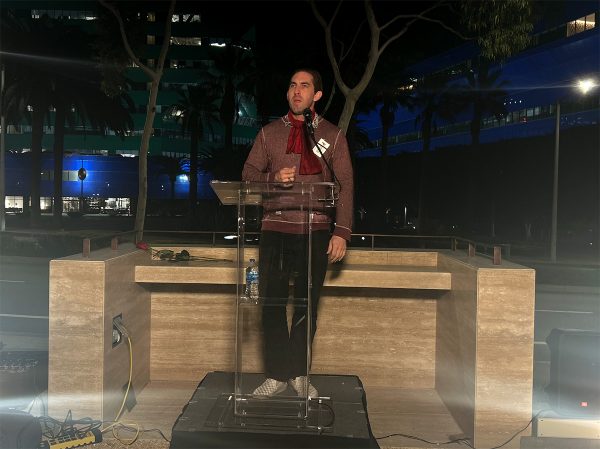
Hank Henderson, one of these writers, read from a diary entry from November 29, 1991. His voice, clear and strong, wavered as he shared about the death of his dear friend Richard. In a piece filled with lush, rich detail, painted clearly with a strong and loving voice, Henderson recounted a memory with Richard during the latter’s last years.
“The Santa Barbara sky is clear blue forever today…Yesterday came and went like a half-remembered dream between snooze alarms,” Henderson recited. “Last year, we walked to the beach. We spent hours there, played frisbee ourselves, brought the dog. Richard even yelled out 30-minute tanning turnover alarms. Yesterday, he took tiny, labored steps back to the car, used my shoulder to keep himself from falling over. Nobody said anything. We just pretend it’s normal.”
Another writer, Austin Nation, shared the story of being told he was HIV-positive at 26 years old. As a young nurse, he remembered the shock of seeing “young, beautiful men” arriving at the hospital covered in “purple, blotchy sores.” When he received his own test results, a paralyzing terror washed over his body. An incredulity followed the fear: why was this happening to him? “I got this thing for what?” Nation spoke. ”For having fun? For making love? And now it’s gonna cost me my life?”
But as he stood before the crowd, now 63 years old, he was met with applause and joy as he stated and repeated: “I’m still here. I’m still here.” The writers, in their grief and loss, have come to a place where they are able to share these stories, empowered and held. “In a world that writes off people with stories like mine,” Nation said. “It’s a hell of a good day to be alive.”
Kristie Song is a California Local News Fellow placed with the Los Angeles Blade. The California Local News Fellowship is a state-funded initiative to support and strengthen local news reporting. Learn more about it at fellowships.journalism.berkeley.edu/cafellows.
West Hollywood
West Hollywood kicks off community-focused programming for World AIDS Day
Since 1988, queer communities have come together on Dec. 1st to honor siblings and allies lost to the AIDS epidemic.

Since 1988, LGBTQ+ communities have come together on Dec. 1st to commemorate queer siblings and allies lost to the AIDS epidemic. This year’s World AIDS Day follows the theme “Overcoming disruption, transforming the AIDS response” and highlights the substantial funding cuts to research, health services, and community initiatives that have prioritized the safety of people with HIV and AIDS. The theme challenges people to think about “radical” ways to organize together and ensure that those who are impacted are able to access the care, treatment, and awareness that they need.
Beginning today, the City of West Hollywood is kicking off programming to recognize the historical transformation that local queer communities experienced during the AIDS epidemic. A panel from the AIDS Memorial Quilt will be available for viewing at the City’s Council Chambers at 625 N. San Vicente Boulevard through Monday, Dec. 15th.
Known as the largest community arts project in history, the Quilt is a powerful memorialization of loved ones who died during the epidemic. Each panel of the Quilt contains a story of remembrance, immortalizing a life cut short during the crisis. The project currently contains over 50,000 panels dedicated to over 110,000 people, all woven together in a 54-ton tapestry piece.
If you’re visiting the panel today, there will be an additional gathering opportunity tonight at the West Hollywood Park for STORIES: the AIDS Monument. From 5:30 to 8:30 p.m., members from the HIV-positive writers collective APLA Health Writers Group will present intimate readings that reflect on their experiences. Community members will be allowed time to wander through the monument and also preview the new Herb Ritts: Allies & Icons exhibition at ONE Gallery after the program. The art show includes striking black and white portraits of activists who stood in alliance with those most impacted during the AIDS epidemic.
Additionally, fresh flowers will be placed on the bronze plaques that line the City’s AIDS Memorial Walk. During the AIDS epidemic, West Hollywood was at the center of a rampant grief and loss that juxtaposed vibrant programming and efforts that boosted healing and fought against stigma and violence. It continues to be a vibrant space that houses various organizations and memorial spots that continue to uphold the revolutionary history and advocacy work that has continued since the epidemic’s beginnings.
Today, West Hollywood is in the process of executing its HIV Zero Strategic Plan, an initiative that began in 2015. Its goals include: expanding healthcare access for people living with HIV and AIDS, reducing the rate of infections, lessening health disparities and inequities for those impacted, and slowing the disease’s progress from advancing to AIDS.
According to West Hollywood mayor Chelsea Byers at a recent Cityhood event, the initiative carries forth the City’s “bold vision” and commitment to ensuring marginalized community members living with HIV do not face the life-threatening discrimination and health barriers that their elders experienced.
To learn more about the City’s programming, read here.
Kristie Song is a California Local News Fellow placed with the Los Angeles Blade. The California Local News Fellowship is a state-funded initiative to support and strengthen local news reporting. Learn more about it at fellowships.journalism.berkeley.edu/cafellows.
West Hollywood
Today, West Hollywood celebrates 41 years of queer cityhood
WeHo’s city officials are trying to preserve the fight for queer safety and rights that began decades before.
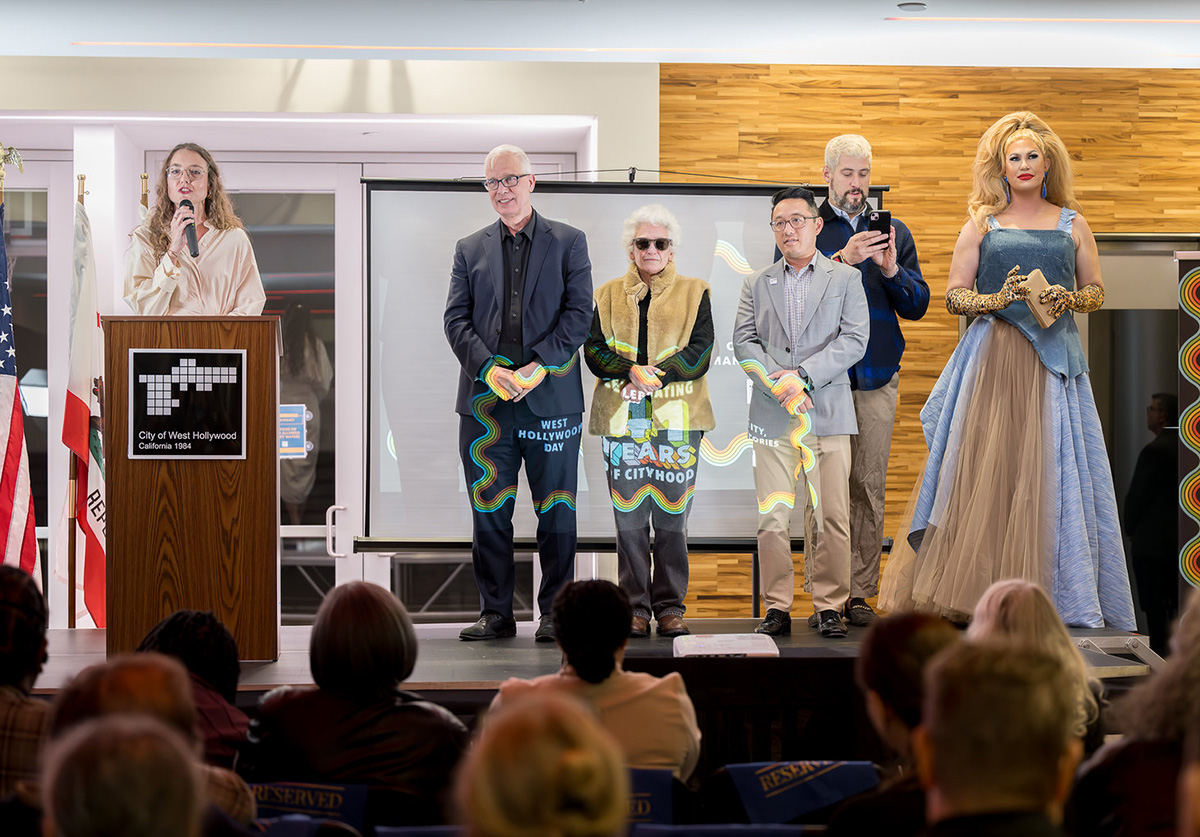
On Nov. 29th, 1984, West Hollywood was incorporated as an independent City, making its sovereignty official and solidifying it further as a sanctuary for LGBTQ+ community members, their stories, and their freedoms. Inspired by other prominent gay neighborhoods like New York’s West Village and San Francisco’s Castro District, West Hollywood was established by local queer advocates and residents. Their first city council was made up of a majority gay governing body — the first in the world, according to the West Hollywood History Center.
This political legacy, and the city’s vibrant and proudly queer history, continues to be preserved. On Monday’s celebratory event, West Hollywood mayor Chelsea Byers announced that the City’s current council “continues to be a majority-LGBTQ+ body,” holding tightly onto a “spirit” that reflects, prioritizes, and fights for Los Angeles’ queer community.
West Hollywood has been through various transformations, cocooning and revitalizing itself through the country’s evolving political and cultural upheavals. It has long been home to a ravishing nightlife that celebrates LGBTQ+ expression, and was a focal point for queer-led liberation and activism in the late 1960s and early 1970s. Trailblazers like Morris Kight led the first gay pride march through West Hollywood’s streets in 1970 and opened the Los Angeles LGBT Center to nourish the City’s robust and blossoming queer communities.
Today, West Hollywood continues to be the place where queer organizers and residents plant roots. Earlier this month, STORIES: the AIDS monument opened up in the City’s park after over a decade of work, shining a light on the legacies of gay activists, artists, historians, and community members who fought to survive as anti-gay stigma led to the erasure of their rights and lives.
As waves of anti-LGBTQ+ hate and violence continue to surge through the country, West Hollywood elected officials aim to continue doing the critical work that began decades before them: the work that protects the ability of queer residents to advocate for themselves, to live with protections and dignity, and to relish in joy. Mayor Byers is inspired by the resilience of the community members who stood together to establish this independent City in 1984. “The people who lived here…wanted a city with strong protections for renters, with progressive policies, and with a local government that would actually reflect and protect the people who call this place home,” said Byers, at the Nov. 24th celebration.
Over 40 years later, these needs have not changed. The way forward? Remembering and fighting for that initial promise and hope. “We are a chorus. We are a tapestry,” said Byers. “We are the product of thousands of people who, for more than four decades, have dared to say: We can build something better here.”
Kristie Song is a California Local News Fellow placed with the Los Angeles Blade. The California Local News Fellowship is a state-funded initiative to support and strengthen local news reporting. Learn more about it at fellowships.journalism.berkeley.edu/cafellows.
West Hollywood
From nickname to reality, the Rainbow District is made official by the City of West Hollywood
The mile along Santa Monica Boulevard from N. Doheny Drive to N. La Cienega Boulevard welcomes residents and visitors to come as they are
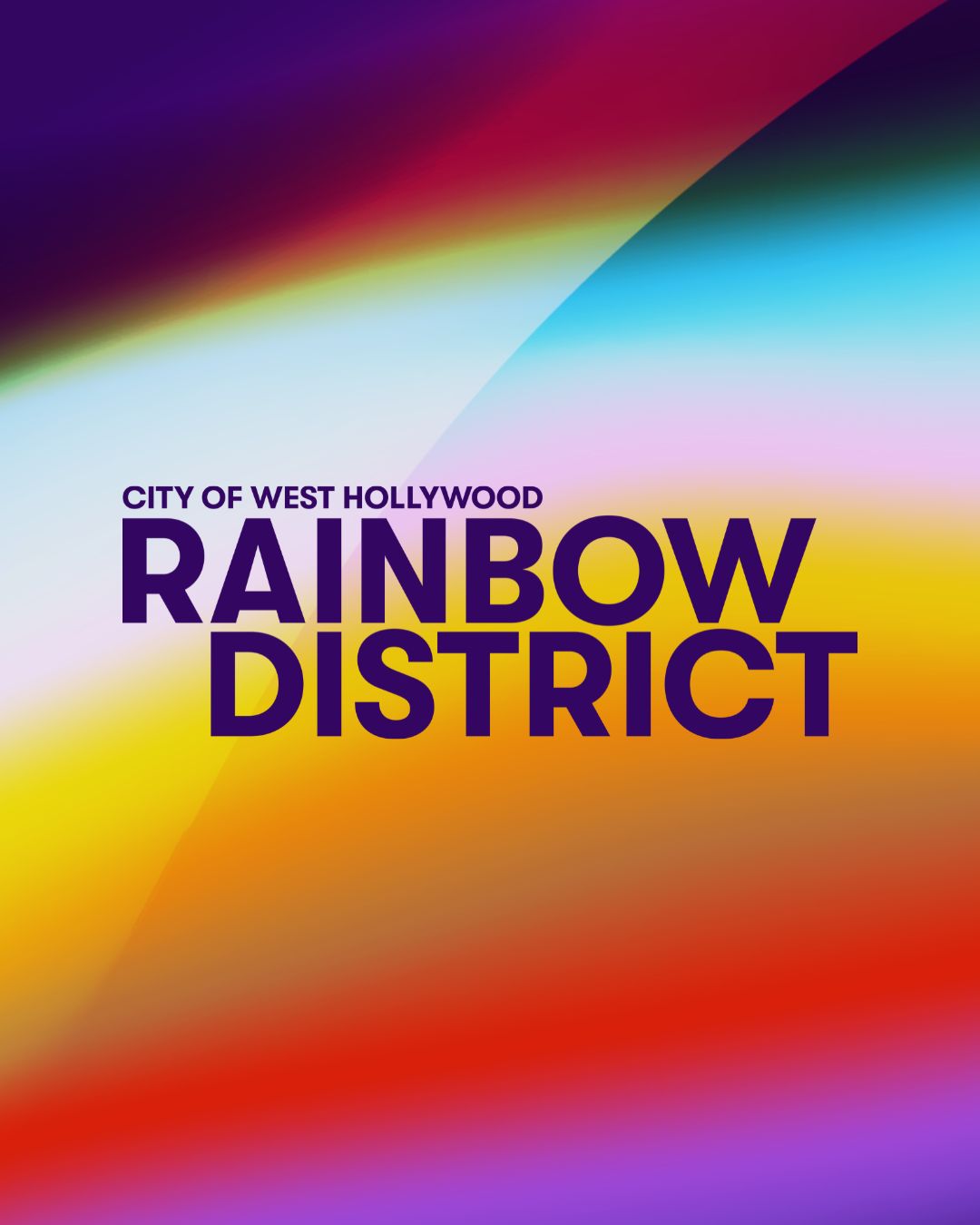
Even in today’s political climate, we will not be hidden.
The vibrant stretch on Santa Monica Blvd of over 50 local businesses, representing the full spectrum of LGBTQ+ expression, from N Doheny Dr to N La Cienega, has had the loving nickname of the Rainbow District for decades. Well, now it’s official. From nightlife to restaurants to community organizations, the City of West Hollywood has formally designated the space as such, honoring the neighborhood’s legacy as a safe haven for the queer community and beyond.
In addition to making the name official, the Rainbow District is being launched with a full range of social media, including Instagram, TikTok, and Facebook, keeping the residents and visitors updated on all upcoming events and happenings in the neighborhood.
Long known as a beacon of acceptance, inclusion, and visibility, where everyone is welcome, this iconic mile-long corridor is now formally recognized for what it has always been: a place where people from every walk of life can come together, be themselves, and celebrate the beauty of diversity.
City of West Hollywood Mayor Chelsea Lee Byers states, “For generations, the City of West Hollywood’s Rainbow District has been a place where LGBTQ+ people take their first steps into living openly, where the warm embrace of community is found at every turn, and where the joy of living out, loud, and proud fills the streets. The City’s official designation of the Rainbow District honors both the legacy and the future of this vibrant neighborhood, home to beloved entertainment venues, bars, and restaurants that have long served as cornerstones of LGBTQ+ life. Today, the Rainbow District is more alive than ever, and it will always stand as a beacon of hope, pride, and belonging and as a reminder that everyone deserves a place to celebrate joy, to be seen, and to be supported.”
The Rainbow District officially joins a nationwide list of iconic LGBTQ+ landmarks. West Hollywood will not be hidden amid political backlash and will continue to protect queer spaces, uplift queer voices, and foster a safe and joyful environment for all.
“This designation is not only a celebration, but it also serves as a promise,” said Visit West Hollywood President & CEO Tom Kiely. “A promise to keep LGBTQ+ spaces visible, valued, and vibrant for generations to come. As the Rainbow District continues to evolve, it will remain a place where locals and visitors alike can connect through culture, creativity, and community. The City’s formal designation affirms its significance and highlights The Rainbow District as the ultimate playground for travelers seeking a unique, inclusive, and authentic experience.”
The Rainbow District will be home to upcoming community events that include:
- Winter Market & Ice Skating Rink — December 2025
- Go-Go Dancer Appreciation Day — March 2026
- Harvey Milk Day — May 22, 2026
- WeHo Pride Weekend & the OUTLOUD Music Festival at WeHo Pride — June 5–7, 2026
Follow the Rainbow District on socials to discover local happenings, support small businesses, and be part of a neighborhood that celebrates every person for exactly who they are.
Instagram: @RainbowDistrictWeHo TikTok: @RainbowDistrictWeHo
Facebook: facebook.com/rainbowdistrictweho More Info: visitwesthollywood.com/rainbowdistrict
West Hollywood
West Hollywood’s AIDS Monument preserves the pain and power of people lost to the crisis
STORIES: The AIDS Monument is now available to view at West Hollywood Park, 15 years after its conception.

It was 1985, at the height of the AIDS crisis, when Irwin Rappaport came out as gay. As he came to terms with his identity, he witnessed people around him grow weaker: their faces becoming gaunt, painful lesions developing on their bodies. Five years later, he began volunteering as a young lawyer at the Whitman-Walker Clinic, a community health hotspot in Washington, D.C. that created the first AIDS hotline in the city, opened homes for patients with AIDS, and distributed materials that promoted safe sex.
The work being done at the clinic was instrumental, essential, and deeply painful. “When you see that sickness and experience that death among your friends and people you know, and when you’re writing wills for people who are much too young in ordinary times — it has an impact,” Rappaport told the Blade. “And even though in 1996 we saw life-saving medications come around, you never forget the sense of fear that permeates your life. The sense of loss.”
Determined to honor and share the legacies of people who died from AIDS, Rappaport joined the Foundation for the AIDS Monument (FAM) board to work towards the organization’s goal of creating a physical monument dedicated to memorializing these histories. FAM treasurer Craig Dougherty first conceived of this project in 2010 and, after 15 years, STORIES: The AIDS Monument is now available to the public for viewing.
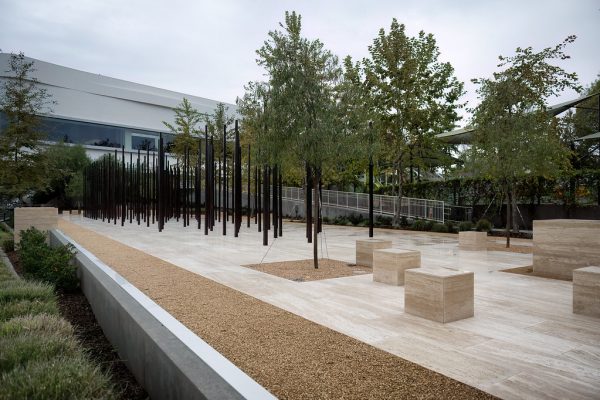
Created in collaboration with the City of West Hollywood, STORIES: The AIDS Monument is composed of 147 vertical bronze pillars known as “traces.” Designed by artist Daniel Tobin, 30 of these traces are engraved with words like: activism, isolation, compassion, and loss, which correlate to the over 125 audio stories collected and archived on the foundation’s website. This multimodal storytelling allows people who come across the monument to engage more intimately with the people represented by these physical pillars.
At nighttime, lights transform the monument into a candlelight vigil, providing a warm glow to a wanderer’s journey through the structure.
When people were able to walk around the traces at Sunday’s grand opening ceremony at the Pacific Design Center, the last remnants of the weekend’s rainstorm created a kind of “spiritual” and reverent atmosphere for those gathering, according to Rappaport. “I think there’s a certain peacefulness and serenity about the design, an opportunity for reflection,” he continued. “For some, it may bring back incredibly painful memories. It might bring back wonderful times with friends who are no longer here. It might remind them of their own caregiving or activism, or the sense of community that they felt in striving with others to get more attention to the disease.”
Now that the monument has been built, FAM has passed the mantle of management and programming to One Institute, a nonprofit that engages community members with queer history through panels, screenings, and other educational initiatives. One Institute plans to host monthly docent tours, art installations, and other special events during various LGBTQ+ national awareness days, including the upcoming World AIDS Day in December.
Rappaport also hopes to do outreach with local schools, so that young students are able to engage with the monument, learn about the people who were affected by the AIDS crisis, and interact with the ripples of transformation that this time period sparked in politics, research, the arts, and within society. “For younger people, I think [this is] an invitation for them to understand how they can organize about issues that they care about,” Rappaport said. “[So] they can see what the HIV and AIDS community did as a model for what they can do to organize and change the world, change culture, change law, change politics, change whatever they think needs to be changed. Because we had no other choice, right?”
West Hollywood
West Hollywood invests $1 million to build LGBTQ+ Olympic hospitality house
Pride House LA/WeHo will be an interactive space for queer athletes and allies to celebrate the 2028 Summer Games together.

The first-ever Olympic hospitality house began with humble roots in 1992: a tent pitched on the Port of Barcelona for athletes to gather with their families. Since then, they transformed into fixtures of several major sporting events, with hopes of fostering belonging and safety for athletes of various cultural backgrounds.
It wasn’t until 2010 that the first LGBTQ+ hospitality house, the Pride House, appeared during the Winter Olympics in Vancouver. Over the years, its existence and visibility have faced barriers. During the 2014 Sochi Winter Olympic Games in Russia, Pride House International was denied from organizing its safe hub. The rejection was a blow to the visibility and safety that the organization was trying to promote and create for queer athletes. But this didn’t go unnoticed. International fans demonstrated quiet resistance, hosting remote Pride Houses in support of the Olympians who were barred from openly communing and celebrating together.
As Los Angeles prepares to host the Summer Olympics in July 2028, Pride House is coming back stronger than ever. In early October, the West Hollywood city council approved an agreement that would allocate $1 million to sponsor Pride House LA/WeHo as they prepare to build a temporary structure at West Hollywood Park for the 2028 Games. For 17 days, vibrant LGBTQ+ sports programming will fill the park’s grassy knolls.
Pride House LA/WeHo CEO Michael Ferrera detailed at a Nov. 1st Out Athlete Fund fundraising event that the team plans to build a concert stage to seat over 6,000 people. There will also be a museum that will take viewers through 100 years of queer Olympics history, viewing areas for people to watch the games, and a private athlete village for queer Olympians. “The dream of that is — imagine you’re an athlete from a country where you can’t be out,” said Ferrera. “You come here, and you can be safe and sound.”

As outlined in the city council agreement and stated by Ferrera, most of the programming will be free and open to the public, and in the heart of a neighborhood that many of the county’s queer residents recognize as their safe haven. “We’re centering this important event in West Hollywood Park where our community has come together for decades in celebration, in protest, to support each other and to live our lives,” Pride House LA/WeHo CEO Michael Ferrera wrote to the Blade. “There is no place that is more representative of inclusion and safe spaces.”
The City of West Hollywood is promoting this inclusion further by asking for local community members to voice their perspectives on the formation of Pride House LA/WeHo at West Hollywood Park. On Monday, a community conversation will take place at Plummer Park to encourage residents to help shape the cultural programming that will take place in the summer of 2028. Another conversation will take place on Nov. 21st at the City’s 40th anniversary of Cityhood event.
“We couldn’t do this without the generosity and partnership of the city of West Hollywood,” Pride House LA/WeHo marketing co-lead Haley Caruso wrote to the Blade. “We are so happy to help bring the Olympic spirit to West Hollywood while also providing the community a safe and entertaining venue to enjoy the Games.”
Head to PrideHouseLAWeho.org for more information
West Hollywood
Drag performers delight Carnaval crowds with demure and daring dances
The Halloween party is one of the most anticipated events for queer Angelenos.
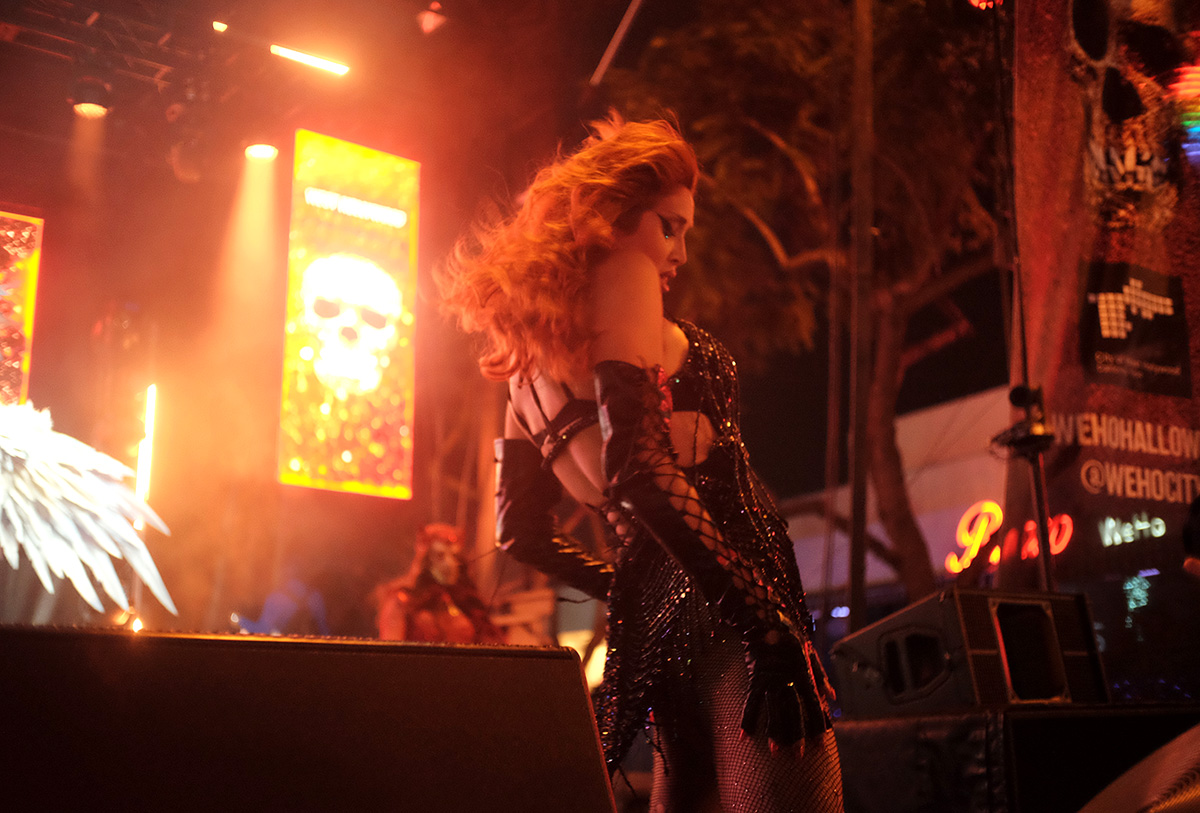
On Friday night, techno pop remixes surged through a tight block on Santa Monica Boulevard, where hundreds of eager partygoers danced near a pop-up stage. Bass-heavy grooves echoed across neighboring streets as Beetlejuices, angels, and vampires swayed and thumped to the beat.
Oct. 31 marked the arrival of West Hollywood’s annual Halloween Carnaval, one of the county’s citywide celebrations — and one of the most anticipated for queer Angelenos.
The first Halloween Carnaval was celebrated in 1987, and has since become one of the most awaited nights for local queer celebration. Drag performers donning elaborate costumes and glamorous makeup set the stage ablaze as they strutted, flipped their hair and danced to the cheers of a crowd that grew enormously as the night went on. The energy was infectious, and the Los Angeles Blade was on the scene to photograph some of these moments.
Image captures by Blade reporter Kristie Song.



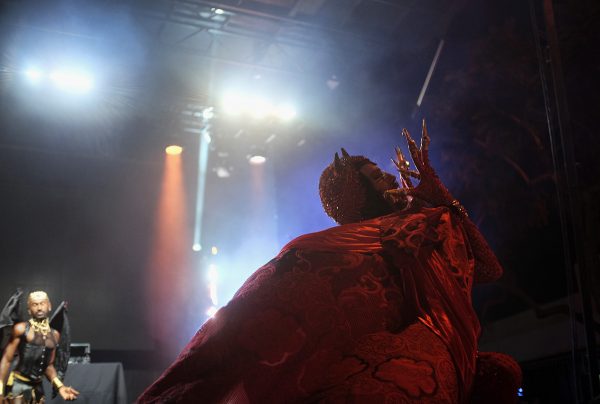
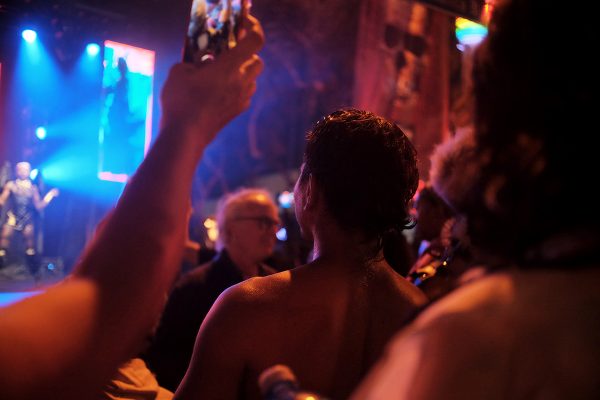
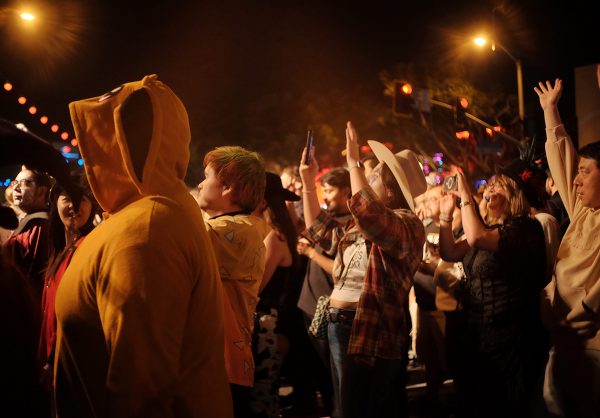

West Hollywood
West Hollywood installs new intersex pride flags on Intersex Awareness Day
On Sunday, city councilmembers gathered to raise two new pride flags to honor intersex community members
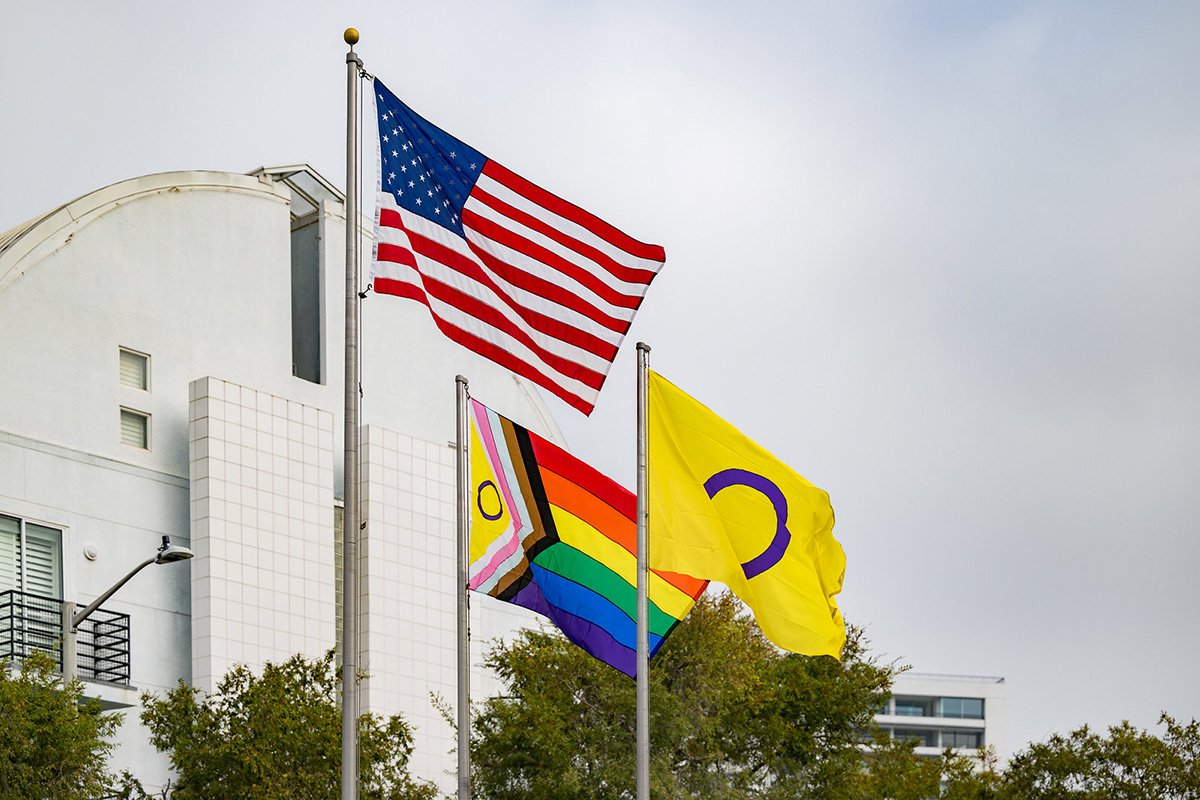
Early yesterday morning, on National Intersex Awareness Day, West Hollywood mayor Chelsea Byers, Vice Mayor John Heilman, as well as councilmembers Danny Hang and John M. Erickson gathered to install and raise two new intersex pride flags. They fly side by side with the American flag, upholding the City of West Hollywood’s vision of solidarity between national pride and LGBTQ+ visibility.
“We are facing unprecedented attacks on our community. It is important that we recognize the entirety of the LGBTQI+ community,” Vice Mayor John Heilman wrote to the Blade. “Intersex people have long been ignored and their issues disregarded. Raising the intersex flag also raises awareness about the challenges many intersex people face.”
Intersex people are born with naturally occurring variations in reproductive and sexual anatomy that don’t fit into binary “male” or “female” categorizations. As Planned Parenthood details, this can look like having both ovarian and testicular tissues or having combinations of chromosomes that aren’t “male” or “female,” just to name a few. According to the Human Rights Campaign Foundation, one of the biggest issues intersex people face is non-consensual surgeries performed when they are children. These operations are considered medically unnecessary and can leave lasting physical and psychological damage on intersex youth.
The fight for bodily autonomy and intersex visibility was the main reason behind the first action organized by intersex advocates and trans allies on Oct. 26th, 1996. Protestors stood outside the Boston Convention Centre, passed out leaflets, and spoke with clinicians, nurses, and other medical professionals attending the annual American Academy of Pediatrics conference.
One of the main leaders behind this movement was Morgan Holmes, an intersex woman who had experienced a violating medical procedure meant to “correct” her anatomy. In May of 1996, she presented testimony in a room adjacent to a symposium on genital surgery for intersex infants, a conference she and other members of her advocacy group had been rejected from.
“What I am saying is that my medical ‘care-givers’ failed to respect my autonomy or my intelligence when they assumed that because I was a child, they could do whatever they wanted as long as my father provided his consent,” Holmes said. “And when I began to balk, instead of questioning their own treatment of me, they blamed my body, and they cut it up.”
Today, intersex people and their stories are more broadly recognized, but still struggle to reach mainstream audiences when it comes to discussions around LGBTQ+ identity. West Hollywood city officials see this addition of intersex pride flags as a step forward. “Updating our city’s flags was my item because visibility matters,” councilmember John M. Erickson wrote to the Blade. “Intersex people have always been part of our story, and it’s time that their history, identity, and pride are recognized in the public spaces that belong to all of us.”
West Hollywood
Residents remain dubious as officials claim “no ICE involvement” at The Abbey
The Oct. 17th “undercover operation” was addressed at the latest city council meeting

On Friday, Oct. 17th, West Hollywood gay bar The Abbey found itself in the center of a social media storm as clips were shared depicting the presumed presence of federal Immigration and Customs Enforcement (ICE) officers. In a video posted on Oct. 18th by Charles Hernandez, who often creates content around gay nightlife in Los Angeles, several people are seen standing in a line as they are apprehended and handcuffed by officers wearing sheriff’s vests and tees. Hernandez noted that, while dressed in varying attire with the word “sheriff” on it, none of the officers were willing to identify themselves or present their badges upon request.
Hernandez can be heard asking the officers about the cause for arrest, to which one responded: “I don’t have to tell you our cause.” The video creator also questioned another officer, who can be seen wearing a gaiter to cover his face. “Isn’t it illegal to wear a mask in California?” Hernandez asked. “He has COVID,” an officer replied. In September, Governor Newsom signed five bills that weakened federal agents’ abilities to access school sites and health facilities, and prohibited them from hiding their identities. More specifically, SB 627 requires all California law enforcement agencies to create written policies limiting their officers’ use of facial coverings by July 1, 2026.
As this video circulated around the web, the West Hollywood Sheriff’s Station released an online statement of their own, denying allegations that the officers present were federal immigration officers. The station also claimed that the night’s events were a result of an “undercover operation” that was conducted in response to reports made about pickpocketing and the transportation, use, and sale of illegal substances. “Several arrests were made,” the statement read. “ICE was not involved.”
Still, residents remained unconvinced, criticizing the station’s lack of transparency, careful conduct, and accountability. Over 50 people took to the comments of this statement to voice their discontent. “[It] was not that long ago when officers would raid LGBTQ spaces and arrest people simply for being there,” one comment read. “A raid such as this does not inspire feelings of safety for our community. Especially in times when people are being kidnapped off the street by masked federal agents. There simply must be a better response to pickpockets and “other criminal activity” than undercover raids by masked officers and transporting detainees in unmarked vehicles. DO BETTER.”
Two days later, at the West Hollywood city council meeting, West Hollywood Sheriff’s Station Captain Fanny Lapkin took to the podium to address some of these concerns. Echoing the station’s Instagram statement, Lapkin confirmed that the “pre-planned operation” was created in response to “concerns from our businesses and our community in regards to the pickpocketing, to the narcotics, and also to the illegal vending and some of the criminal activity during illegal vending.” Lapkin also confirmed that no federal agents were present, stating that everyone who took part in the operation was “sheriff’s department personnel.” And because the arrests were made as part of a planned operation, Lapkin further stated that warrants were not “necessary.”
The events were discussed with brevity at the meeting, but community ire has not been dispelled. Several people continue to question the ethics of this undercover operation: Why were the individuals being arrested not clearly told the reason for their detainment? Why were unmarked vehicles present? Why conduct the operation in this way, as Los Angeles neighborhoods continue to stay on high alert over immigration raids? These questions remain unanswered as more specifics about the operation have yet to be released.
West Hollywood
Captain Fanny Lapkin wants more “transparency” between officers and WeHo residents
We sat down with the recently appointed captain to discuss her approach to LGBTQ+ community safety
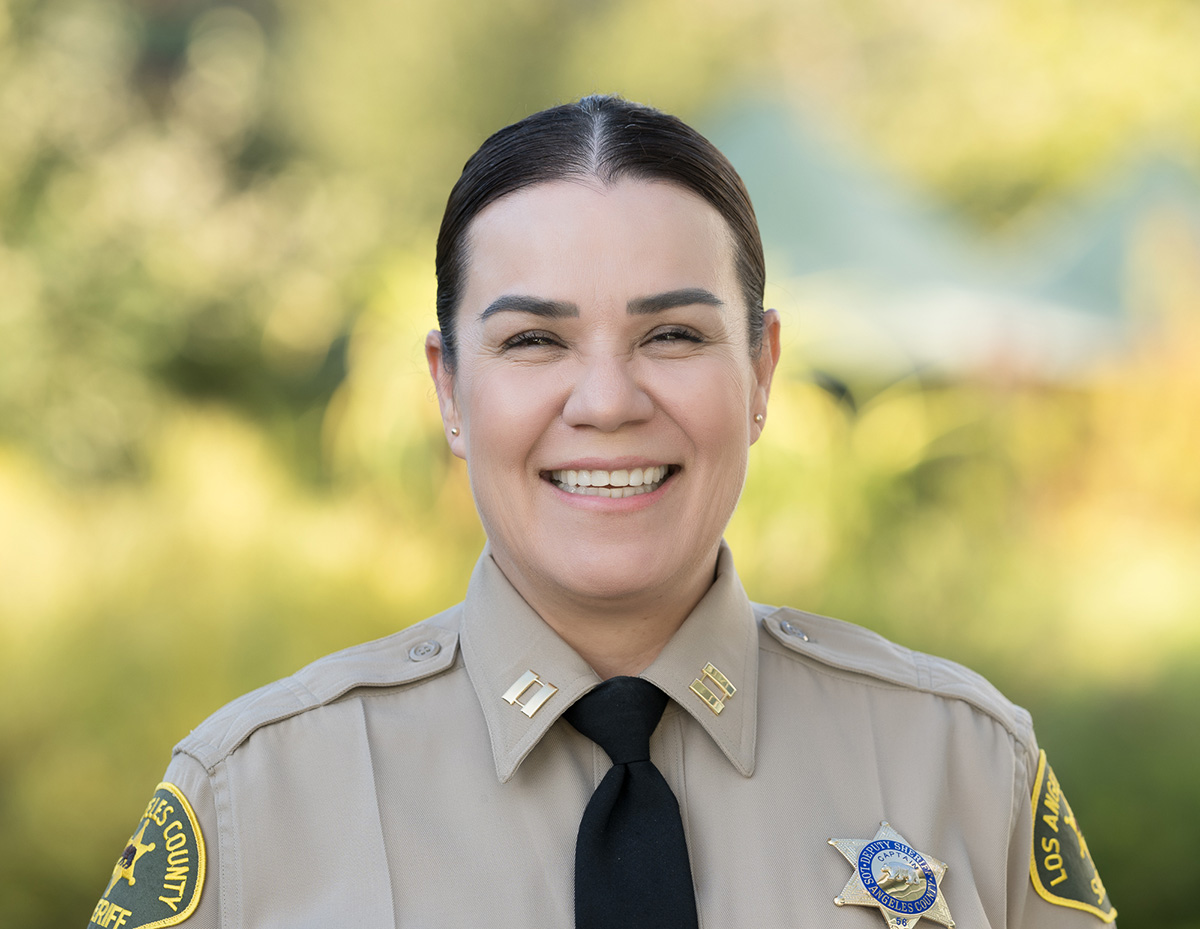
Before Fanny Lapkin became Captain of West Hollywood Sheriff’s Station in August, she was a longtime advisor and mentor for the county’s deputy explorer program: a training and career development opportunity for young adults interested in law enforcement. “I probably had eight or nine of — I call [them] my kids,” Lapkin told the Blade. When some of these mentees became deputies, she felt like a “mama.” Lapkin brings this nurturing approach to her leadership, where she hopes to build deeper community trust and humanize her staff members. “People have the misconception that we’re machines and that we’re robots. We are human beings,” said Lapkin.
Lapkin first ventured into law enforcement as a college student, where a casual walk into the East Los Angeles Sheriff’s Station for volunteer credit led to a seven-year-long stint. As a volunteer, she assisted deputies, participated in neighborhood watch, and became involved with safety measures for local community members. “I fell in love with the job,” said Lapkin. She officially took on a law enforcement role in 1997 and was eventually assigned to the Santa Clarita Valley’s Sheriff’s Station, where she worked as a community relations deputy.
In 2019, Lapkin began working at the West Hollywood Sheriff’s Station, climbing the ranks as service area sergeant to service area lieutenant before her most recent promotion to station captain in August. Lapkin says that she and fellow station staff pushed for LGBTQ+ inclusive curriculum for peace officer standards and training.
In September 2018, AB 2504 was passed, which required the state’s commission on peace officer standards and training to develop training material around LGBTQ+ identity and create inclusive workplaces. In 2024, AB 2621 was chaptered into law, which required the commission to also create and implement instruction on hate crimes against specific groups, including LGBTQ+ communities.
Today, Lapkin hopes to continue building trust with marginalized community members, especially LGBTQ+ individuals afraid to seek help through law enforcement. The Blade sat down with the captain to discuss her perspective and approach.
How do you hope to foster effective relationships between the sheriff’s station and community members?
Honestly, [it’s about] being available, being present. Joining Neighborhood Watch, having that open communication, making sure that you know the residents, whether it be from our LGBT community or visitors. We make sure that our deputies have the necessary training to be able to deal with different community members, whether direct leaders, whether business owners, or public safety commissions. Being available for them — I think that’s the number one thing, is just making yourself available to have those conversations.
Also, having that transparency — if something does happen, let’s talk about what happened. In some cases, we won’t be able to discuss for obvious reasons, but it’s having that open communication and making sure that our community feels that they’re safe and that their voice is heard.
It’s having the conversation: How can we come together to find a resolution for [issues]? People come from different directions to try and resolve a problem. So my thing is, everybody has a seat at the table. From being a volunteer to a deputy to moving up the ranks, I’ve always lived by that. I’ve had amazing mentors who have always had that open-door policy, [where] every community member has a seat at the table. Come and tell us what your concerns are, and we’ll tell you how we can fix them. There are going to be times when we cannot do something about it, because it doesn’t rise to the level of a crime. But we can tell you, without giving you legal advice, how you can try to resolve something.
How have you seen community issues and safety shift since you started working in the West Hollywood Sheriff’s station in 2019? How do you hope to address all of these shifts?
2019 kind of put us all in a bubble. But again, it’s just having that open communication and making yourself available, going to local events, participating in outreach, and just making sure that our community members, whomever they are — our Russian community, our Jewish community, our LGBT community — that they feel that they’re being heard, that we listen to them, and we understand that each of them have unique needs. So it’s trying to understand that and fostering a great environment where they’re comfortable enough to come to us, whether it be telling us how wonderful our deputies are, or also telling us they didn’t like the service that they received.
If I get a concern, [like] somebody saying, “Well, I don’t like the way this deputy handled the call.” I look at every single body-worn camera footage. I listen to the phone calls. And if it’s something that we could do better, we fix it, right? And if it’s something that maybe was misinterpretation…I tell [deputies]: take the extra two minutes to listen to our community, because you’re going to learn something by just slowing yourself down.
Unfortunately, our patrol deputies are under tight constraints. We are understaffed. They are working the extra overtime, but…we’re not machines, we’re not robots. We’re humans. And sometimes, the human nature kind of steps in at times. But we have to make sure that we teach them how to find the balance.
What are the unique needs and challenges West Hollywood communities face today?
The challenge is just making sure that our community trusts us [and] that our community is comfortable enough to come to us when they have a concern, when they’re victims. Especially with the LGBTQ community or even our transgender community, they’re a little nervous about going to law enforcement, or they feel that they’re going to be victimized again. That’s one thing that [we see] as a priority. We want to make sure that they don’t feel that, and that they do feel that they’re being heard, and that their safety is one of our concerns. We don’t care whether you’re LGBTQ, transgender, Jewish, or Russian — we’re going to treat you equally. If you’re a victim of a crime, we’re going to assist you and help you. I think we just want to make sure that our community members feel that they can come to us and we’re going to advocate for them, [that] we’re going to be a good partner.
What are the active ways that you and the station are building that kind of trust, specifically with LGBTQ+ and trans community members? How can they have that open dialogue with you and the station to feel safer?
Because there was a need for our transgender community…we started with a quarterly meeting, but we moved them to every six months, where we have a meeting and we invite any member of the community to come in and sit down and talk to us. We included our California Department of Justice partners. We included the trans Latina community. Our LGBTQ commission came out.
That’s something that we’re trying to figure out. What’s going to be the best time to have these open dialogues? It’s a town hall roundtable. Tell us what your concerns are, and we’ll tell you how we can fix them.
-

 Riverside County3 days ago
Riverside County3 days agoYesterday, Palm Desert residents shut down Councilmember’s “hateful” proposal to remove City’s Pride Month resolution
-

 Sports2 days ago
Sports2 days agoLA County contributes over $181K to Out Athlete Fund for Pride House LA/West Hollywood
-

 National4 days ago
National4 days agoAs house Democrats release Epstein photos, Garcia continues to demand DOJ transparency
-
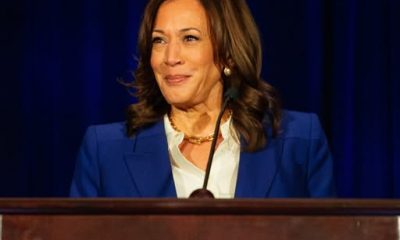
 Politics3 days ago
Politics3 days agoLGBTQ Democrats say they’re ready to fight to win in 2026
-

 Religion & Faith4 days ago
Religion & Faith4 days agoComing home to myself this Hanukkah in West Hollywood
-
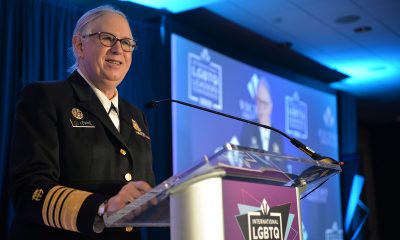
 National4 days ago
National4 days agoWhite House deadnames highest-ranking transgender official
-

 Events4 days ago
Events4 days agoLos Angeles Blade and matchmaker Daniel Cooley present a free gay holiday singles mixer
-

 Politics4 days ago
Politics4 days agoGeorge Santos speaks out on prison, Trump pardon, and more
-

 Crime & Justice1 day ago
Crime & Justice1 day agoSan Fernando Valley LGBTQ+ community center Somos Familia Valle is trying to rebuild from a “traumatizing” break-in
-

 Books14 hours ago
Books14 hours ago‘Dogs of Venice’ looks at love lost and rediscovered





